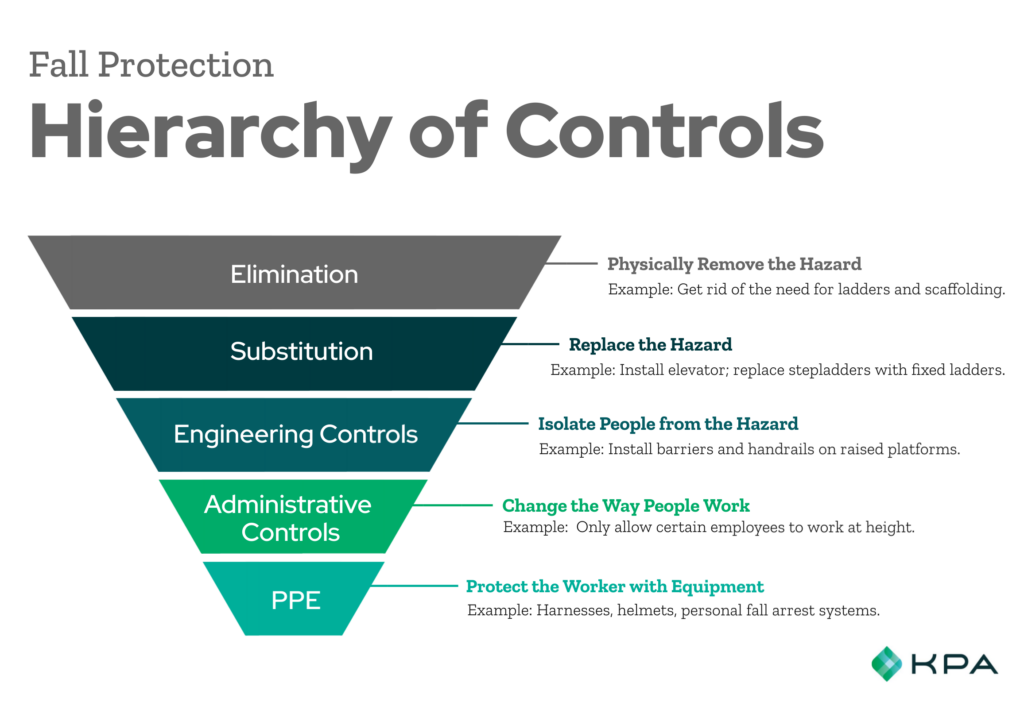“Help! I’ve fallen and I can’t get up!”
Many of us remember this refrain from the late-night infomercials of the 1980s and 90s. Two different medical alarm companies—LifeCall and Life Alert—used it in their ads, where it was often feebly shouted by an elderly woman who had taken a tumble.
Something about this was hilarious at the time. The catchphrase showed up in television shows and movies, on mugs and t-shirts. People would repeat it at parties and around the office. It was a meme before memes existed.
Honestly, I never really understood what was so funny about the phrase back then. Now, knowing what I know about fall protection, I get it even less.
It’s no joke when you actually fall… and actually can’t get up.
Indeed, falls are one of “the most common causes of serious work-related injuries and deaths,” according to OSHA, and fall protection is the #1 most frequently cited workplace safety violation.
We all need to take this seriously. People get hurt and die because we don’t take it seriously enough—because falls seem silly compared to other workforce risks, such as exposure to toxic chemicals or forklift accidents. And yet, in 2019, the number of fall protection violations exceeded the rates of both of those issues combined.
The Hierarchy of Controls
Falls are a straightforward problem with a straightforward solution—the same solution for every occupational safety problem: the hierarchy of controls.
A hierarchy of controls is an approach to environmental safety that structures protective measures into 5 stages, in order of most to least effective:

At the top of the list is elimination—the best possible option for keeping people safe. In the context of fall protection, elimination would mean rethinking work so that people didn’t need to use ladders or scaffolding—they could do their jobs without ascending to heights.
At the bottom is PPE, the last resort for keeping people safe. Types of PPE for fall protection include harnesses, hard hats, and—yes—even emergency alarm devices like the ones Life Alert advertises at 3 in the morning.
1. Elimination
Physically Remove the Hazard
Example: Get rid of the need for ladders and scaffolding.
2. Substitution
Replace the Hazard
Example: Install an elevator; replace stepladders with fixed ladders.
3. Engineering Controls
Isolate People from the Hazard
Example: Install barriers and handrails on raised platforms.
4. Administrative Controls
Change the Way People Work
Example: Only allow certain employees to work at height.
5. Personal Protective Equipment
Protect the Worker with Equipment
Example: Harnesses, helmets, personal fall arrest systems.
How Can You Prevent Falls in Your Workplace?
Although PPE is the least effective fall prevention option, it’s become one of the more popular strategies. That has negative implications, writes loss control and occupational safety expert Melissa Black, in a recent Safety+Health article:
“We all like gadgets. When it comes to personal protective equipment, our gadget appetite is no different. Don’t misunderstand—it’s wonderful that we have advanced so far from the 1990s when a waist belt and lanyard were considered fall protection PPE; however, when you consider just a few of the factors that are needed to make informed, lifesaving decisions on fall, it can be daunting. There’s rip stitch, shock absorption, deceleration distance, D-ring shift, back height, fall height, lanyard length, swing radius, safety factor, self-retracting systems, anchor points, locking/nonlocking cantilevers, deflection and more. Combined with a population that may be reluctant to acknowledge a lack of understanding or ask questions, you can have a recipe for disaster.”
In other words, many employers are overcomplicating fall protection by focusing on shiny, new PPE workers can wear at height rather than considering if people even need to be up there, to begin with. And because falls seem like a trivial and obvious thing (they’re not), many workers don’t speak up when they’re unclear about PPE, or even neglect to wear it.
You can avoid these issues by backing up and reconsidering how and where work is performed. Can the task be completed lower to the ground? If so, introduce new systems rather than opting for new equipment first. As Black recommends: “Design out the need to be at height whenever possible. Remove gravity, remove the risk.”
Read “Fall protection and the Hierarchy of Controls.”
Let’s make sure our employees never get in a situation where they’re fodder for bad commercials. That’s where KPA can help. The combination of KPA’s Vera Suite platform, EHS consulting services, and award-winning training helps organizations minimize risk so they can focus on what’s important—their core business.
